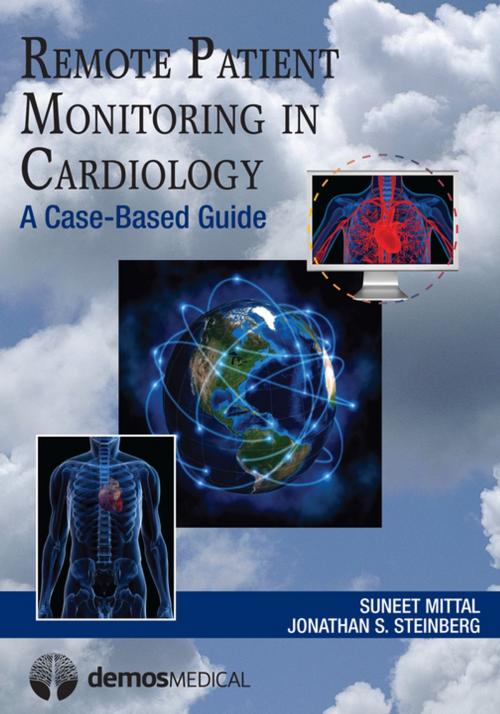Remote Patient Monitoring in Cardiology
Nonfiction, Health & Well Being, Medical, Specialties, Internal Medicine, Cardiology| Author: | Suneet Mittal, MD, Jonathan S. Steinberg, MD | ISBN: | 9781617050916 |
| Publisher: | Springer Publishing Company | Publication: | July 20, 2012 |
| Imprint: | Demos Medical | Language: | English |
| Author: | Suneet Mittal, MD, Jonathan S. Steinberg, MD |
| ISBN: | 9781617050916 |
| Publisher: | Springer Publishing Company |
| Publication: | July 20, 2012 |
| Imprint: | Demos Medical |
| Language: | English |
Cardiovascular medicine is witnessing an explosion in capability for remote monitoring of implantable electronic devices, which provide great potential for improved clinical outcomes and enhanced device safety and efficacy, as well as more efficient and cost-effective care.
There are numerous devices now utilized in remote monitoring, including ambulatory ECG recorders, implanted loop recorders, pacemakers, cardiac defibrillators, and cardiac resynchronization systems. Cardiovascular physicians, allied health professionals, and office staff need to understand the merits and weaknesses of existing technology. They also need to become well-versed in management of the new wealth of data these devices provide, design and use of appropriate systems to support monitoring technology, and proper utilization of remotely acquired data in clinical decision making, as well as the demands for patient education and orientation to assure compliance.
Remote Patient Monitoring in Cardiology outlines the strengths and weaknesses of existing technology; provides a framework for incorporating existing technology into clinical practice with emphasis on professional society guidelines; illustrates, through a multitude of real-world clinical vignettes how data retrieved remotely can be used to drive clinical decision making to positively affect patient outcome; highlights existing barriers that limit the widespread implementation of remote patient monitoring into practice; and proposes areas for development.
Remote Patient Monitoring in Cardiology features:
- Concise, practical, and current guide to appropriate use of these technologies
- Provides a framework for incorporating existing technology into clinical practice
- Case-based approach presents real-world examples of applications
- Highlights barriers that limit widespread implementation of remote patient monitoring
Cardiovascular medicine is witnessing an explosion in capability for remote monitoring of implantable electronic devices, which provide great potential for improved clinical outcomes and enhanced device safety and efficacy, as well as more efficient and cost-effective care.
There are numerous devices now utilized in remote monitoring, including ambulatory ECG recorders, implanted loop recorders, pacemakers, cardiac defibrillators, and cardiac resynchronization systems. Cardiovascular physicians, allied health professionals, and office staff need to understand the merits and weaknesses of existing technology. They also need to become well-versed in management of the new wealth of data these devices provide, design and use of appropriate systems to support monitoring technology, and proper utilization of remotely acquired data in clinical decision making, as well as the demands for patient education and orientation to assure compliance.
Remote Patient Monitoring in Cardiology outlines the strengths and weaknesses of existing technology; provides a framework for incorporating existing technology into clinical practice with emphasis on professional society guidelines; illustrates, through a multitude of real-world clinical vignettes how data retrieved remotely can be used to drive clinical decision making to positively affect patient outcome; highlights existing barriers that limit the widespread implementation of remote patient monitoring into practice; and proposes areas for development.
Remote Patient Monitoring in Cardiology features:
- Concise, practical, and current guide to appropriate use of these technologies
- Provides a framework for incorporating existing technology into clinical practice
- Case-based approach presents real-world examples of applications
- Highlights barriers that limit widespread implementation of remote patient monitoring















